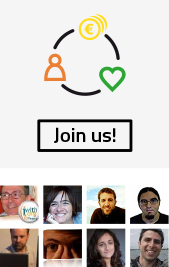Social media is no longer a mere content diffuser, not allowing us to know whether what we publish is effective. In today’s world, measuring activity on Twitter, Facebook and even Youtube is very important for the non-profit sector. To achieve this, we have to look at KPIs (key performance indicators). These are metrics which help us assess the results of a specific action according to set targets and goals. In that sense, we can use metrics to get to know the users' profiles, which content generates the most interest, etc. In addition, obtaining data on social media allows later analysis to help achieve your NGO's goals.
Thanks to Twitter Analytics, we can track the number of followers, profile visits, retweets, mentions, etc. Regarding Youtube, its analytics tool allows us to access users’ demographic data, to know which videos are the most popular, and to determine the number of views per video.
Other metrics tools exist such as Google Analytics or Abcore Cadí statistics, the latter of which offers email marketing metrics for organisations. For further information about metrics, you can download Wingu's Manual de métricas (in Spanish) by clicking on the following link or seek advice on iWith.org.
.jpeg)
From targets to metrics
Four main targets will be identified:- To create a community
- To create loyalty
- To boost the reach of the publications, or viral marketing
- To boost the conversion rate
Thanks to Twitter Analytics, we can track the number of followers, profile visits, retweets, mentions, etc. Regarding Youtube, its analytics tool allows us to access users’ demographic data, to know which videos are the most popular, and to determine the number of views per video.
Other metrics tools exist such as Google Analytics or Abcore Cadí statistics, the latter of which offers email marketing metrics for organisations. For further information about metrics, you can download Wingu's Manual de métricas (in Spanish) by clicking on the following link or seek advice on iWith.org.
.jpeg)











